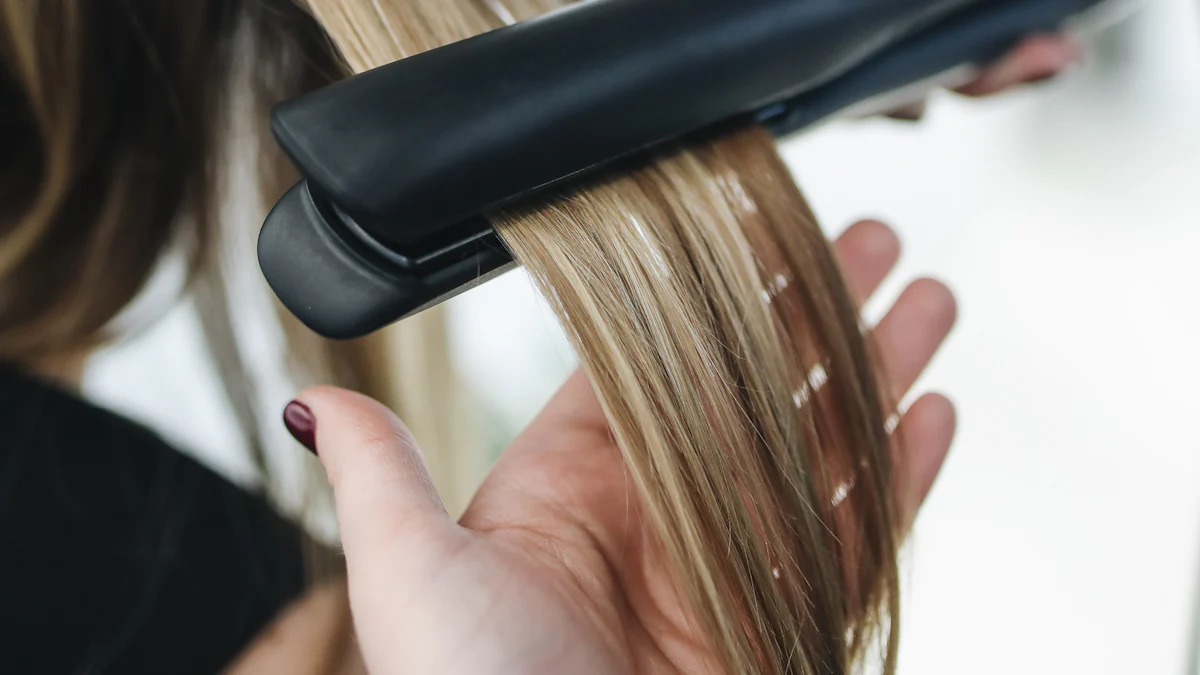How to Apply Lace Front Wig Adhesive Like a Pro

Securing lace front wig adhesive ensures a natural look and confidence. Lace front wig hairstyles have gained popularity due to their realistic appearance and versatility. Different methods exist for securing these wigs, including wig caps, wig glue, and wig tape. Each method offers unique benefits and suits various preferences. Understanding these options helps achieve a flawless application. Luvmeforyou provides high-quality lace front wigs that cater to diverse styling needs. Explore the best techniques to secure your lace front wig like a pro.
Understanding Lace Front Wigs

What Are Lace Front Wigs?
Basic Structure
Lace front wigs feature a sheer lace panel along the front hairline. This lace blends seamlessly with your skin, creating a natural look. The rest of the wig consists of a more durable material, providing structure and support. Hair strands are individually hand-tied to the lace, mimicking the appearance of natural hair growth.
Popularity and Benefits
Lace front wigs have gained immense popularity due to their realistic appearance. These wigs allow for versatile styling options, including the ability to part your hair in different ways. Many people choose lace front wigs for their low maintenance and cost-effectiveness. Synthetic lace front wigs, in particular, offer an affordable alternative to human hair wigs while still providing a natural look. Increasing cases of hair thinning and beauty consciousness have also driven the demand for these wigs.
Importance of Secure Attachment
Natural Look
Securing your lace front wig properly ensures a natural look. A well-attached wig creates the illusion of hair growing directly from your scalp. This realistic appearance boosts confidence and allows you to experiment with various hairstyles. Technological advancements in wig manufacturing have enhanced the natural look of lace front wigs, making them almost indistinguishable from natural hair.
Comfort and Confidence
A securely attached lace front wig provides comfort throughout the day. Proper attachment prevents the wig from shifting or slipping, allowing you to move freely without worry. Breathable fabric used in lace front wigs ensures that your scalp remains cool and comfortable. This comfort, combined with the natural look, significantly boosts your confidence. You can enjoy your day knowing that your wig looks and feels great.
Pros and Cons of Each Method
Wig Caps
Benefits
Wig caps provide a smooth base for your lace front wig. The cap helps to flatten natural hair, creating a seamless look. Wig caps also protect your scalp from direct contact with adhesives. This method reduces irritation and enhances comfort. Wig caps come in various materials like nylon and mesh, offering breathability and durability.
Drawbacks
Wig caps can sometimes cause discomfort if worn for extended periods. The cap may slip, affecting the wig's secure attachment. Some people find that wig caps make their scalp feel hot. Wig caps may not provide the same level of hold as other methods like wig glue or tape adhesive.
Wig Glue
Types of Adhesive
Wig glue comes in different forms such as liquid and gel. Liquid adhesive offers a strong hold and dries quickly. Gel adhesive provides a flexible bond, making it easier to adjust the wig. Some glues contain silicone-based ingredients, creating a protective barrier on the skin.
Benefits
Wig glue ensures a durable and secure attachment. The adhesive creates a natural look by blending seamlessly with the scalp. Wig glue allows for versatile styling options. The strong hold prevents the wig from shifting, providing confidence throughout the day.
Drawbacks
Wig glue can cause skin irritation for some users. Testing for allergies before full application is crucial. Removing wig glue can be challenging and may require special solvents. Overuse of adhesive can damage both the wig and natural hair.
Wig Tape
Advantages
Tape adhesive offers a quick and easy application process. The tape provides a strong hold, ideal for active lifestyles. Tape adhesive is less likely to cause skin irritation compared to some glues. Double-sided tape can be used for additional support, especially in areas where hair knots aren't exposed.
Limitations
Tape adhesive may not offer the same level of flexibility as wig glue. The tape can lose its adhesive properties in humid conditions. Removing tape adhesive can sometimes leave residue on the scalp. The tape may not provide a seamless look if not applied correctly.
Application Tips

Preparation
Cleaning the Scalp
Clean your scalp thoroughly before applying any adhesive. Use a gentle cleanser to remove oils and dirt. This step ensures a strong bond between the lace front wig and your skin. A clean scalp prevents irritation and promotes comfort.
Gathering Tools and Products
Gather all necessary tools and products before starting the application process. You will need wig glue, tape adhesive, a small makeup brush, and scissors. Having everything ready makes the process smoother and more efficient.
Applying Wig Glue
Step-by-Step Guide
Wash Your Natural Hair: Ensure your natural hair is clean and flat.
Prepare Your Forehead: Clean your forehead thoroughly.
Position the Lace Front Wig: Place the wig on your head carefully.
Apply the Glue: Apply a thin layer of wig glue before your hairline using a small makeup brush.
Press the Wig: Press the wig firmly against your scalp to secure it.
Seal the Hairline: Seal the hairline with the adhesive for a strong bond.
Trim Excess Lace: Cut off any excess lace from the wig.
Clean Excess Glue: Remove any excess glue around the hairline.
Expert Tips
WIGI Hair recommends using waterproof and long-lasting wig glue to preserve your edges and achieve a flawless look.
Wealthy Hair advises creating a protective layer between the adhesive and your skin to prevent irritation.
Applying Wig Tape
Step-by-Step Guide
Flatten Your Natural Hair: Ensure your natural hair is flat.
Clean Your Hairline: Clean your hairline thoroughly.
Cut the Tape: Cut the tape adhesive to match the length of the wig's front edge.
Apply the Tape: Apply the tape adhesive around your hairline.
Attach the Wig: Press the wig firmly against the tape to secure it.
Check for Secure Attachment: Ensure the wig is securely attached and adjust if necessary.
Expert Tips
Use double-sided tape for additional support, especially in areas where hair knots aren't exposed.
Consider using wig tape if you have sensitive skin, as it is less likely to cause irritation compared to some glues.
Considerations for Choosing
Skin Sensitivity
Testing for Allergies
Skin sensitivity plays a crucial role when choosing an adhesive for your lace front wig. Always test for allergies before full application. Apply a small amount of adhesive to a patch of skin. Wait 24 hours to see if any reaction occurs. This step helps prevent irritation and ensures comfort.
Desired Hold Strength
Comparing Methods
Different adhesives offer varying hold strengths. Wig glue provides a strong and durable hold. This option suits those who need long-lasting attachment. Tape adhesive offers a quick and easy application. This method works well for those with active lifestyles. Wig caps provide a moderate hold. This choice suits those who prioritize scalp protection.
Ease of Removal
Practical Tips
Ease of removal is another important factor. Wig glue can be challenging to remove. Use special solvents to break down the adhesive. Tape adhesive often leaves less residue. Remove tape by gently peeling it off. Wig caps are the easiest to remove. Simply take off the cap without any additional steps.
Securing a lace front wig involves choosing the right method for your needs. Wig caps, wig glue, and wig tape each offer unique benefits. Evaluate your skin sensitivity, desired hold strength, and ease of removal. Make an informed decision to ensure comfort and confidence. For maintaining and styling, always clean your scalp and tools. Store wigs properly to extend their lifespan. Regularly check for adhesive residue and clean it off. Enjoy experimenting with different styles while keeping your wig secure and natural-looking.






















